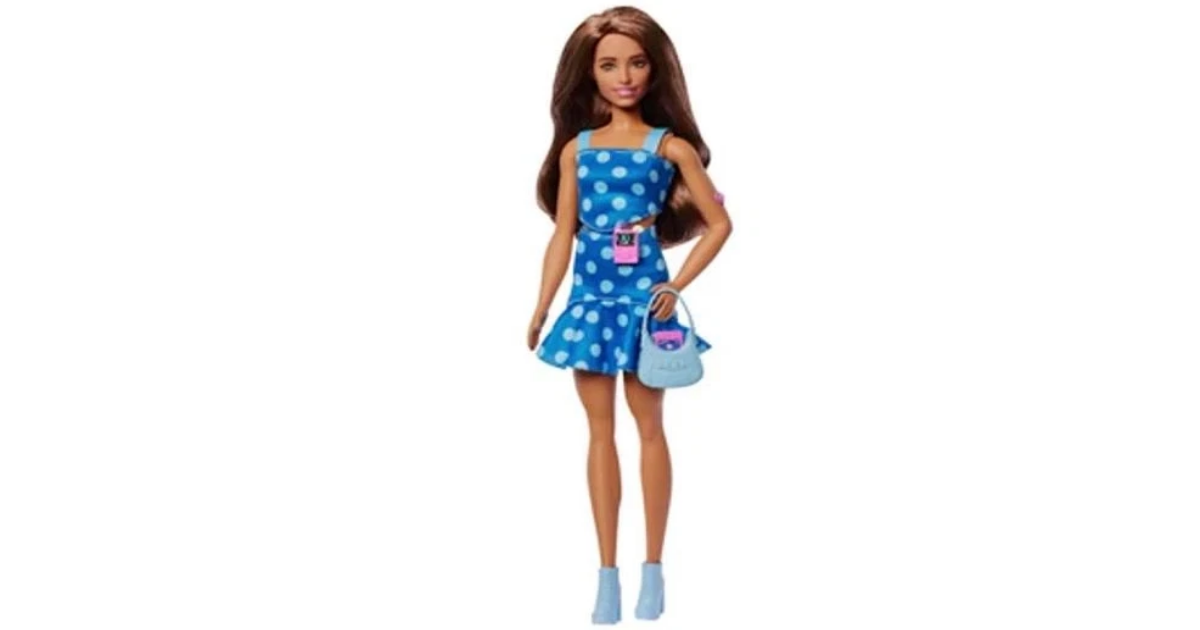EL SEGUNDO, Calif. (TNND) — Mattel and Breakthrough T1D teamed up to create a new Barbie that’s meant to help and educate children: the first-ever Barbie doll with type 1 diabetes, or T1D.
The doll was designed “with inclusion and empathy at the core,” according to Mattel, which is the company that makes Barbie.
Introducing a Barbie doll with type 1 diabetes marks an important step in our commitment to inclusivity and representation,” Krista Berger, who is the senior Vice President of Barbie and Global Head of Dolls, said in a news release. “Barbie helps shape children’s early perceptions of the world, and by reflecting medical conditions like T1D, we ensure more kids can see themselves in the stories they imagine and the dolls they love.”
Aaron J. Kowalski, Ph.D., who is the CEO of Breakthrough T1D, shared similar sentiments. He also said the new doll really hits home for him in a special way, as he has T1D.
We were thrilled when Barbie approached us to collaborate on the development of the Barbie doll with type 1 diabetes,” Kowalski said.
I have lived with T1D since I was 13, and my brother since he was 3, so this partnership is deeply personal — it means the world to be part of bringing greater visibility to a condition that affects so many families,” he added. “It’s an honor to work with a brand that shares our commitment to showing children that a life with type 1 diabetes can be full, vibrant, and empowering.”
According to the Mayo Clinic, Type 1 diabetes is a chronic autoimmune condition in which the pancreas makes little or no insulin. Insulin is a hormone the body uses to allow sugar — glucose — to enter cells to produce energy.
This leads to dependence on insulin therapy, as well as the risk of short and or long-term complications.
In the release, Mattel said it wanted to partner with Breakthrough T1D to make sure the doll design “truly captures” the T1D community. That’s why the new Barbie wears a CGM on her arm to help manage her type 1 diabetes.
CGMs are small, wearable devices that continuously measure a person’s blood-sugar levels,” according to the release. “To keep her CGM in place, she uses heart-shaped medical tape — Barbie pink, of course — along with a phone that displays a CGM app to help track her blood sugar levels throughout the day.”
The doll is also equipped with an insulin pump, a small, wearable medical device that allows for automated insulin dosing as needed. The device is attached to Barbie’s waist.
She also wears what Mattel described as “a stylish polka dot top and matching skirt with ruffles,” as both the color blue and circle print are nods to the global symbols that represent diabetes awareness, the release noted.
Plus, she uses a pastel blue purse, which is “perfect for Barbie to carry any essentials, such as type 1 diabetes supplies or snacks, when she’s on the go.”
To raise awareness, Mattel also said Barbie honored two celebrities and type 1 diabetes advocates, including Peloton Instructor Robin Arzón in the U.S. and model Lila Moss in the U.K., with their own one-of-a-kind Barbie dolls.
After being diagnosed with type 1 diabetes a decade ago, I’ve found a lot of purpose in advocating for people with the condition and educating others about it because knowledge is power — especially for young minds,” Arzón said in the release. “It’s an absolute honor to receive a Barbie doll as a part of the brand’s efforts to grow awareness and representation surrounding type 1 diabetes, so that we can help show kids that all types of challenges give us all the more reason to push forward and achieve our dreams.”
Moss said she is proud to use her platform to educate people about Type 1 diabetes “and show that being different is cool.”
Receiving messages from people who see my patches and feel represented means everything to me. To be able to now see Barbie dolls with T1D, and to receive a Barbie doll that visibly looks like me even wearing her patches, is both surreal and special,” she said.
According to the Centers for Disease Control and Prevention, 38.4 million Americans of all ages — amounting to about 11.6% of the U.S. population — were estimated to have diabetes as of 2021, the latest year with data available. About 2 million had Type 1 diabetes, including about 304,000 children and teens younger than 20.
______________
EDITOR’S NOTE: The Associated Press contributed to this report.
